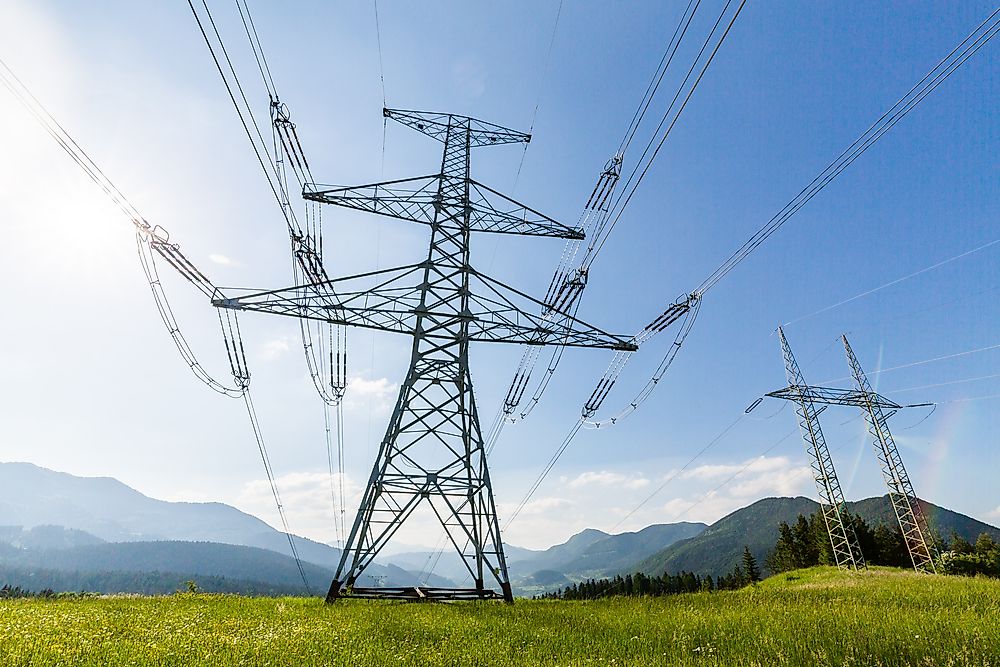What Are The Major Natural Resources Of Slovakia?

Slovakia is a European nation that has been blessed with a wide variety of natural resources such as arable land, forests, and minerals. The economy of Slovakia is highly reliant on the country's natural resources as the government's economic policy emphasizes the proper utilization of the resources. In 2017, Slovakia's GDP was the 63rd highest in the world at $95.77 billion according to statistics from the World Bank. On the other hand, its GDP per capita was the 41st highest in the world at $17,605.
Arable Land
One of Slovakia's most important natural resources is its arable land which made up roughly 28.75% of the country's territory in 2015 according to data from the World Bank. The data also indicated that from 2003 to 2015, the size of arable land in Slovakia has been fluctuating reaching its peak in 2013 when it accounted for 29% of Slovakia's land. The size of arable land in Slovakia reached its lowest in 2006 when it was roughly 28.63% of the country's territory. The agricultural sector is one of Slovakia's most important industries as it contributed roughly 3.8% of the country's gross domestic product in 2017 which was a significant decline from its contribution in 1994 when it was 10.2% of the country's GDP. The Slovakian labor department estimated that in 2015, roughly 3.9% of the country's labor force was employed in the agricultural sector. Slovakia's most important agricultural areas are situated in the country's southern region. Slovakian farmers grow a wide variety of crops such as grapes, wheat, potatoes, corn, and rye among others.
Grapes
Slovakian farmers grow several types of grapes such as Veltlínské zelené, Frankovka modrá, and Cabernet Sauvignon. Most of Slovakia's grapes are grown in the country's southern region, which is divided into six distinct growing regions. The grapes are used in the production of wine most of which are consumed locally and in the neighboring countries. One of the most important wine-producing regions in Slovakia is the Tokaj region which also extends into Hungary. The region is well-known for producing dry wines and dessert wines. The most common grape varieties in the Tokaj region are yellow Muscat, Lipovina, and Furmint. Another important winegrowing region in Slovakia is Malokarpatská which is situated close to the foot of the Carpathian Mountains. Malokarpatská is famous for producing high-quality blackcurrant wines.
Livestock
Slovakian farmers also keep a wide variety of livestock such as cattle, sheep, pigs, and poultry. Most of Slovakia's livestock are kept to satisfy the local demand for meat, milk, and eggs. Several breeds of cattle have been developed in Slovakia such as the Slovak spotted cattle and the Slovak pinzgau cattle. The Slovak spotted cattle were bred during the late 18th century and the early 19th century through breeding cattle from Switzerland with local Slovak breeds. Different sheep breeds have also originated in Slovakia such as the domestic Tsigai and the improved Wallachian sheep. The domestic Tsigai was developed for its milk and is unique from its predecessors because of its larger size.
Forests
In 2015, forests covered roughly 40.35% of Slovakia's territory and from 2004 to 2015 Slovakia's forest cover increased at a rapid pace especially 2004 to 2006. In 2000, Slovakia was ranked as the country with the fourth-highest forest cover in Europe. The increase in forest cover in Slovakia can be attributed to the government's policies that encourage forest conservation. Despite the significant efforts to conserve Slovakia's forests, they face several challenges with the most significant ones being climate change and over-exploitation.
Beautiful Scenery
Slovakia has a large number of beautiful sites which constitute the country’s natural resources. Some of the most remarkable areas in Slovakia include the Skok waterfalls and the Demanovska Ice Cave. Bratislava, Slovakia's capital is also one of the most popular tourist destinations in the country. The Tatra Mountains are also considered as some of the most beautiful areas in Slovakia. Slovakia is one of the most popular tourist destinations in the world and it attracted more than 4.5 million visitors in 2016. Data from the Slovakian government showed that most of the tourists who visited the country were from European nations such as the Czech Republic, Poland, and Germany. The Slovakian government has invested heavily in improving the country's tourism industry mainly through advertising in foreign countries. The Slovakian government has also urged private companies to invest in the country's tourism industry.
Minerals
Slovakia has several essential minerals such as iron, coal, and gold. Most of Slovakia's minerals are sold to other nations such as Germany, the Czech Republic, and Poland. The government of Slovakia has encouraged private companies to invest in the country's mineral industry to increase its contribution to the economy.
Coal
One of the most critical minerals in Slovakia is coal. The coal mined in Slovakia is mainly used locally to produce energy. The most common types of coal found in Slovakia are lignite and brown coal. One of Slovakia's most important coal mines is Hornonitranske Bane which is situated in the central part of the country. It is believed that the mine could produce at least 3 million tons of brown coal. Roughly 85% of the coal produced at the mine was consumed by the local power plants, and the rest were sold on the retail market. Another major coal mining operation in Slovakia is Bana Dolina which is situated in the southern part of Slovakia and it is believed that the mine could produce at least 500,000 tons of brown coal. Another major coal mining operation in Slovakia is situated in the western region of the country and is referred to as Bana Zhorie. The Slovakian government has put in place plans to phase out the use of coal and replace it with cleaner energy sources.











